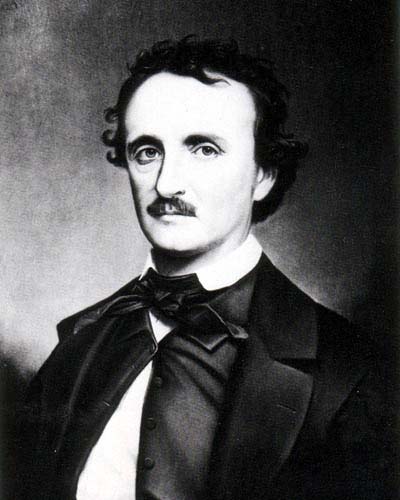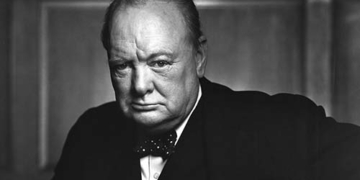Share via:

Edgar Allan Poe (born Edgar Poe; 1809 – 1849) was an American writer, poet, editor, and literary critic. Poe is best known for his poetry and short stories, particularly his tales of mystery and the macabre. He is widely regarded as a central figure of Romanticism in the United States and of American literature as a whole, and he was one of the country’s earliest practitioners of the short story. He is also generally considered the inventor of the detective fiction genre and is further credited with contributing to the emerging genre of science fiction. Poe was the first well-known American writer to earn a living through writing alone, resulting in a financially difficult life and career.
Poe was born in Boston, the second child of actors David and Elizabeth “Eliza” Poe. His father abandoned the family in 1810, and his mother died the following year. Thus orphaned, Poe was taken in by John and Frances Allan of Richmond, Virginia. They never formally adopted him, but he was with them well into young adulthood. Tension developed later as Poe and John Allan repeatedly clashed over Poe’s debts, including those incurred by gambling, and the cost of Poe’s education. Poe attended the University of Virginia but left after a year due to lack of money. He quarreled with Allan over the funds for his education and enlisted in the United States Army in 1827 under an assumed name. It was at this time that his publishing career began with the anonymous collection Tamerlane and Other Poems (1827), credited only to “a Bostonian”. Only 50 copies were printed, and the book received virtually no attention.
Poe switched his focus to prose and spent the next several years working for literary journals and periodicals, becoming known for his own style of literary criticism. In January 1845, Poe published his poem “The Raven” to instant success. Poe was also known as a writer of fiction and became one of the first American authors of the 19th century to become more popular in Europe than in the United States. Poe is particularly respected in France, in part due to early translations by Charles Baudelaire. Baudelaire’s translations became definitive renditions of Poe’s work throughout Europe.
Poe’s early detective fiction tales featuring C. Auguste Dupin laid the groundwork for future detectives in literature. Sir Arthur Conan Doyle said, “Each [of Poe’s detective stories] is a root from which a whole literature has developed…. Where was the detective story until Poe breathed the breath of life into it?” The Mystery Writers of America have named their awards for excellence in the genre the “Edgars”. Poe’s work also influenced science fiction, notably Jules Verne, who wrote a sequel to Poe’s novel The Narrative of Arthur Gordon Pym of Nantucket called An Antarctic Mystery, also known as The Sphinx of the Ice Fields. Science fiction author H. G. Wells noted, “Pym tells what a very intelligent mind could imagine about the south polar region a century ago”. Horror author and historian H. P. Lovecraft was heavily influenced by Poe’s horror tales, dedicating an entire section of his long essay, “Supernatural Horror in Literature”, to his influence on the genre.
Even so, Poe has also received criticism. This is partly because of the negative perception of his personal character and its influence upon his reputation. William Butler Yeats was occasionally critical of Poe and once called him “vulgar”. Transcendentalist Ralph Waldo Emerson reacted to “The Raven” by saying, “I see nothing in it”, and derisively referred to Poe as “the jingle man”. Aldous Huxley wrote that Poe’s writing “falls into vulgarity” by being “too poetical”—the equivalent of wearing a diamond ring on every finger.
Edgar Allan Poe planned for years to produce his own journal The Penn (later renamed The Stylus), but before it could be produced, he died in Baltimore on October 7, 1849, at age 40. The cause of his death is unknown and has been variously attributed to disease, alcoholism, substance abuse, suicide, and other causes.
Edgar Allan Poe – First Editions Identification Guide
This list contains Edgar A. Poe’s published works. Poe also contributed to various literary magazines and periodicals; not included here, notably:
- Southern Literary Messenger (December, 1835 – January, 1837)
- The Gentleman’s Magazine (July, 1839 – June, 1940)
- Graham’s Magazine (April, 1841 – January, 1846)
- The Broadway Journal (March 8, 1845 – January 3, 1846)
| Year | Title | Publisher | First edition/printing identification points |
|---|---|---|---|
| 1827 | Tamerlane and Other Poems | Boston: Calvin F. S. Thomas, 1827 | First edition. Pamphlet, paper wrappers. 40 pages. |
| 1829 | Al Aaraaf, Tamerlane and Minor Poems | Baltimore: hatch & Dunning, 1829 | First edition. Half cloth,purple boards with sprinkling of red dots, page uncut, 72 pages. |
| 1831 | Poems | New York: Elam Bliss, 1831 | First edition. Published as "Second Edition" on title page. Dark green cloth,page uncut, 124 pages. |
| 1838 | The Narrative of Arthur Gordon Pym of Nantucket | New York: Harper & Btohers, 1838 | First edition. Cloth with paper label, page uncut, 198 pages. |
| 1839 | The Conchologist's First Book | Philadelphia: Haswell, Barrington & Haswell, 1839 | First edition. Cloth back, illustrated paper sides,page uncut, 156 pages and 12 inserted plates. |
| 1839 | Tales of the Grotesque and Arabesque | Philadelphia: Haswell, Barrington & Haswell, 1839 | First edition. Two volumes. Cloth withpaper labels, page uncut. |
| 1843 | The Prose Romances of Edgar A. Poe | Philadelphia: William H. Graham, 1843 | First edition. Paper covered pamphlet, 48 pages. |
| 1845 | Tales | New York: Wiley & Putnam, 1845 | First edition. Cloth, 228 pages. |
| 1845 | The Raven and Other Poems | New York: Wiley & Putnam, 1845 | First edition. Cloth & paper, page uncut, 100 pages. |
| 1848 | Eureka: A Prose Poem | New York: Geo. P. Putnam, MCDDDXLVIII | First edition. Cloth, gold stamped, 143 pages. |
Reference:
- Wikipedia
- Bibliography of the Writings of Edgar A. Poe, John W. Robertson, M.D.

